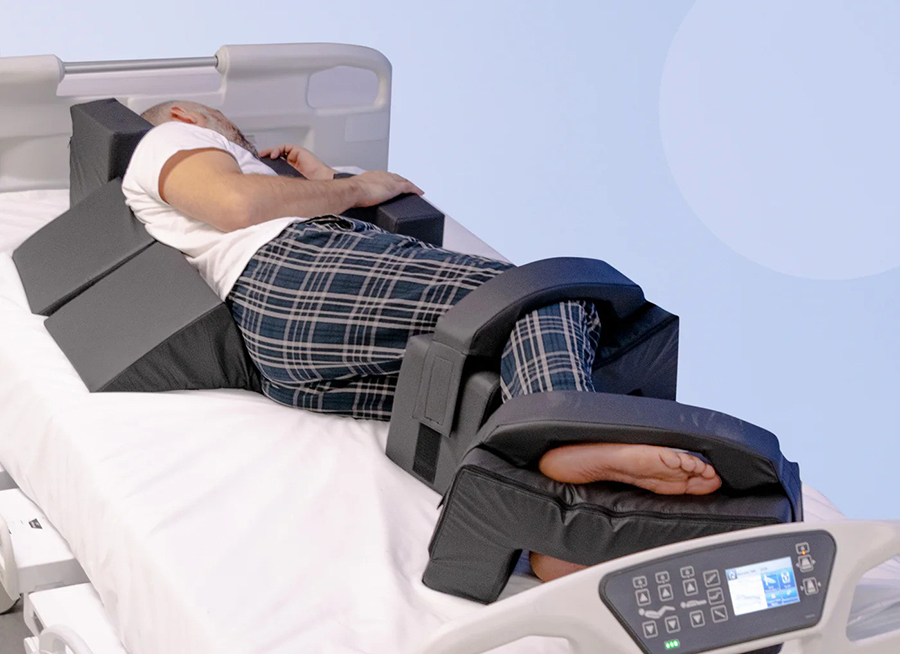
Levitex, a sleep posture brand, has launched the Levitex Rehab Range, which is designed to support elderly people to live at home independently and safely through accessible at-home recovery solutions.
The new range brings tried-and-tested clinical support tools, like lumbar cushions, pressure-relieving seat toppers, and spinal alignment aids, directly to the people who need them most.
All of the products are rooted in Levitex’s belief that posture is an overlooked but powerful tool in health and recovery. The launch is designed to bridge the gap between hospital care and at-home recovery by making evidence-based posture support solutions available to every household in the UK and not just to hospital patients or elite athletes.
The range includes a mattress topper that aids movement and improves sleep quality; a Hugga sleep system clinically designed to offer full body support when sleeping; a wheelchair cushion for enhanced comfort and support; and a mattress designed with a cutting-edge sleep surface that manages pressure, posture, and movement.
Each product comes with guidance on how to use it for maximum benefit.
Posture expert James Leinhardt developed the Rehab Range amid the growing ageing population and rising demand for better recovery solutions at home.
James has spent over 15 years supporting people with complex neurological conditions in both NHS and private settings. The TEDx speaker believes that more can be done to equip families and carers with the practical tools and techniques used in clinical rehabilitation environments.
“The NHS does an absolutely phenomenal job at supporting the elderly,” James commented. “But we’re facing a demographic tidal wave, with millions more people ageing into their 70s, 80s, and beyond, and the pressure on NHS teams will only grow.
“That’s why we’ve got to act now to support recovery where it increasingly happens: at home.
“When older people have the right tools to sleep better, sit better, and move more freely, it lightens the load, not just for themselves, but for the whole system that’s trying to keep up with the UK’s increasingly aging population.”
Centre for Ageing Better statistics shows that in the last 40 years, the number of people aged 50 and over has increased by over 6.8 million (a 47 percent increase), and the number aged 65 and over has increased by over 3.5 million (a 52 percent increase).
Over 10 million people are currently aged 65 and over, making up 18 percent of the population.
In addition, the number of people aged 65-79 is predicted to increase by nearly a third to over 10 million in the next 40 years, while the number of people aged 80 and over – the fastest growing segment of the population – is set to more than double to over six million.
James added: “Patients are often sleeping on poor quality mattresses, whether that’s in hospital beds or at home, and it is effectively like getting people to sleep in a bowl of porridge. Their movement is restricted and their joints tense, which increases the risk of pain and makes it harder for people to move and recover.”
Worryingly, Age UK says that two million older people in England have an unmet need for social care. Among them, 600,000 people aged 65 and over have difficulty getting in and out of bed.
“These aren’t luxury problems,” James continued. “This is basic mobility, basic dignity. The right posture support can be the difference between someone needing round-the-clock help, or being able to move, rest, and recover on their own terms.”
In light of these statistics, the Levitex Rehab Range aims to make rehabilitation tools that are usually given to Olympic champions and people recovering from life-changing injuries more accessible to everyone who needs them, such as someone recovering from a hip operation.
The post New rehab range aims to bridge the gap between hospital care and at-home recovery appeared first on AT Today – Assistive Technology.
